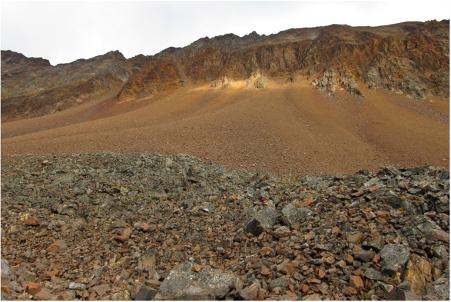Snowline Gold Corp. (CSE: SGD) has uncovered a5.1 km zone of anomalous gold values found in soil and talus fine samples at Gracie through generative exploration work at its Rogue project in the Yukon Territory, Canada.
Geochemical assay results received from late season 2021 contour soil and talus fine sampling reveal a large zone of anomalous gold values to 1.71 g/t Au on top of and around a probable, near-surface, gold-bearing intrusion at the company’s Gracie target.
“These results add to strong evidence that Gracie could host a large and fertile reduced-intrusion related gold system,” said Scott Berdahl, CEO and director of Snowline.
“What excites us about this – beyond the potential to duplicate our Valley discovery – is that the intrusion at Gracie hasn’t been exposed by erosion. These gold systems can be most prospective at the very top of an intrusion, where initial cooling of the edges creates a brittle carapace that fractures to accommodate later gold bearing fluids.
“An intact carapace at Gracie thus makes for a compelling exploration target adjacent and complementary to the company’s 2021 Valley and Ridge discoveries.”
Anomalous gold in soil samples up to 1.71 g/t Au were returned from 5.1 km along a north-south trending ridge. All 43 samples within a central area roughly 1,600 m long by 800 m wide area averaged 0.49 g/t Au, with 8 results >1 g/t Au. Gold values in this core area have elevated bismuth (up to 287 ppm) and tellurium (up to 7 ppm) – a geochemical signature that is the same as Snowline’s Valley zone and is similar to other reduced-intrusion related gold systems.
Limited historical surface work at Gracie yielded mineralised rock samples in outcrop and float, with values of up to 57.0 g/t Au (quartz sulphide vein float).
Prospecting by Snowline personnel in 2021 returned float grab samples of up to 6.9 g/t Au. Regional airborne z-tipper axis aeromagnetic (ZTEM) data from 2008 over the Gracie target area are resistive and indicate a felsic intrusion with hornfels country rock exposed on the surface and surrounding the intrusion.
These geophysical results are consistent with initial observations of the Gracie target area and will be further verified by the company.
Given the steep, rocky terrain and poor soil development, many soil samples from the Gracie area are classified as talus fines. Talus fines samples are produced by mechanical weathering of rocks are less modified by chemical weathering than typical soils. Some elements in talus fine samples may have stronger geochemical responses than soils from over a bedrock geochemical anomaly.
Talus fine samples are also more susceptible to a sampling bias wherein more easily weathered mineralized zones, such as sulphide-rich veins, can contribute a larger portion of the talus fine sediment load than the more durable and relatively barren country rock, resulting in a concentration of associated elements like gold.
Exploration Plans
The proximity of Gracie to Snowline’s Valley zone, some four km to the west, makes for convenient and cost-effective exploration in light of the Company’s planned 3,000 m drill program at Valley in 2022.
Expansion of the 2021 Valley zone aeromagnetic survey is planned for coverage of the Gracie zone and the broader claim block using a helicopter-borne geophysics system. Additional surface sampling and geological mapping at Gracie will provide further context for magnetic and geochemical results to assist potential drill targeting.
For further information please visit: https://snowlinegold.com/












